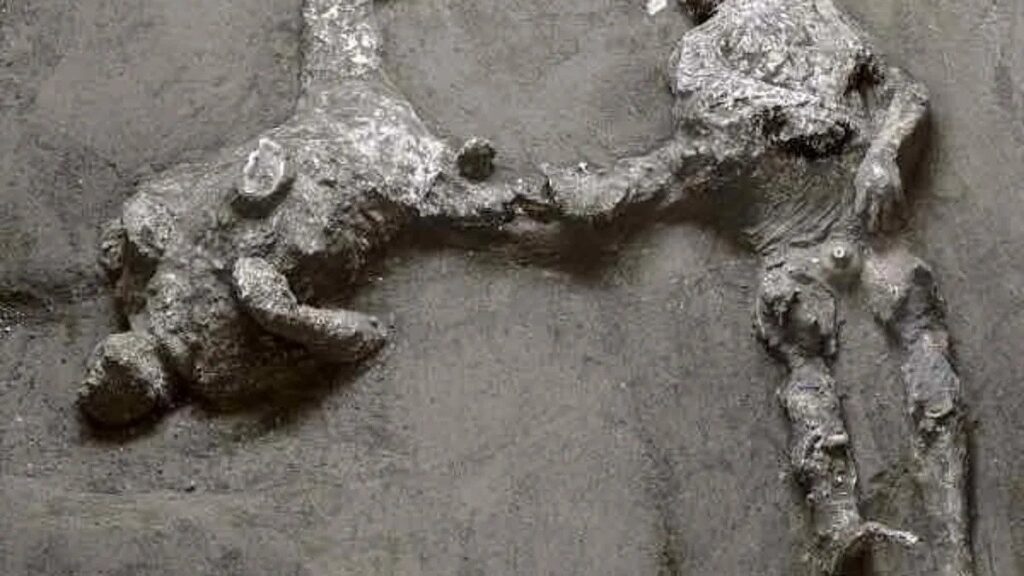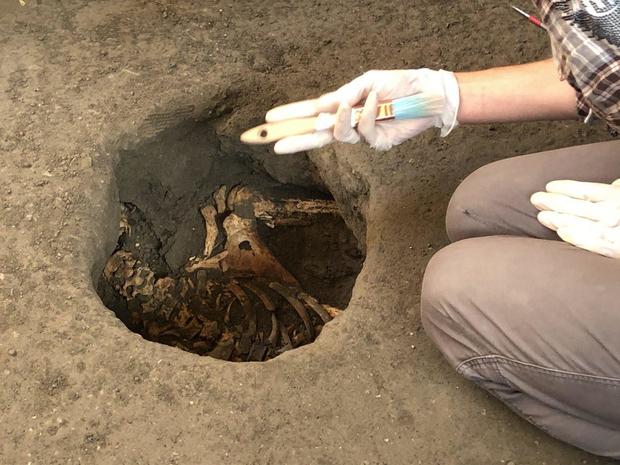Archaeologists find remains of a man and his slave killed in the Pompeii eruption
The men may have escaped the first volcanic eruption that destroyed the city but died in the blast the next day.

The deadly eruption of Mount Vesuvius in Pompeii happened nearly 2,000 years ago, but more evidence from that horrifying event continues to reveal itself even now.
Partial male skeletons from that time period have been unearthed, officials at Italy’s Pompeii archaeological park said on Saturday.
During an excavation of ruins about 700 meters (about 2,300 feet) northwest of Pompeii, two skeletons were found lying next to each other in a layer of grey ash at least 6.5 feet (2 meters) deep.
Archaeologists poured plaster into the empty spaces left by the decaying bodies in the ash.
This technique, pioneered in the 1800s, better shows the victims’ bodies but also makes the remains “seem like statues,” Massimo Osanna, an archaeologist who is director of the archaeological park operated under the jurisdiction of the Italian Culture Ministry, explained to AP News.
The skeletons were found in a side room of a suburban villa along an underground corridor called a cryptoporticus.
“The victims were probably looking for shelter in the cryptoporticus, in this underground space, where they thought they were better protected,” Osanna said.
Studying the skulls and teeth, archaeologists have determined one of the men was between the ages of 18 and 25.
The young man also had a spinal column with compressed discs, which led archaeologists to hypothesize he may have done manual labour as a slave.

The impression of fabric folds left in the ash layer also shows the younger man may have been wearing a short, pleated wool tunic.
The other male skeleton had a strong bone structure, especially in his chest area.
He was estimated to have been between the ages of 30 and 40. He may have been wearing a tunic as well as a mantle over his left shoulder.
Archaeologists believe these two men died suddenly, according to a statement, not during the first eruption but instead during the second pyroclastic flow, a violent, energetic flow that struck Pompeii and the surrounding area in the early hours of Oct. 25, leading to the death of the survivors who were still present in the city and countryside.





